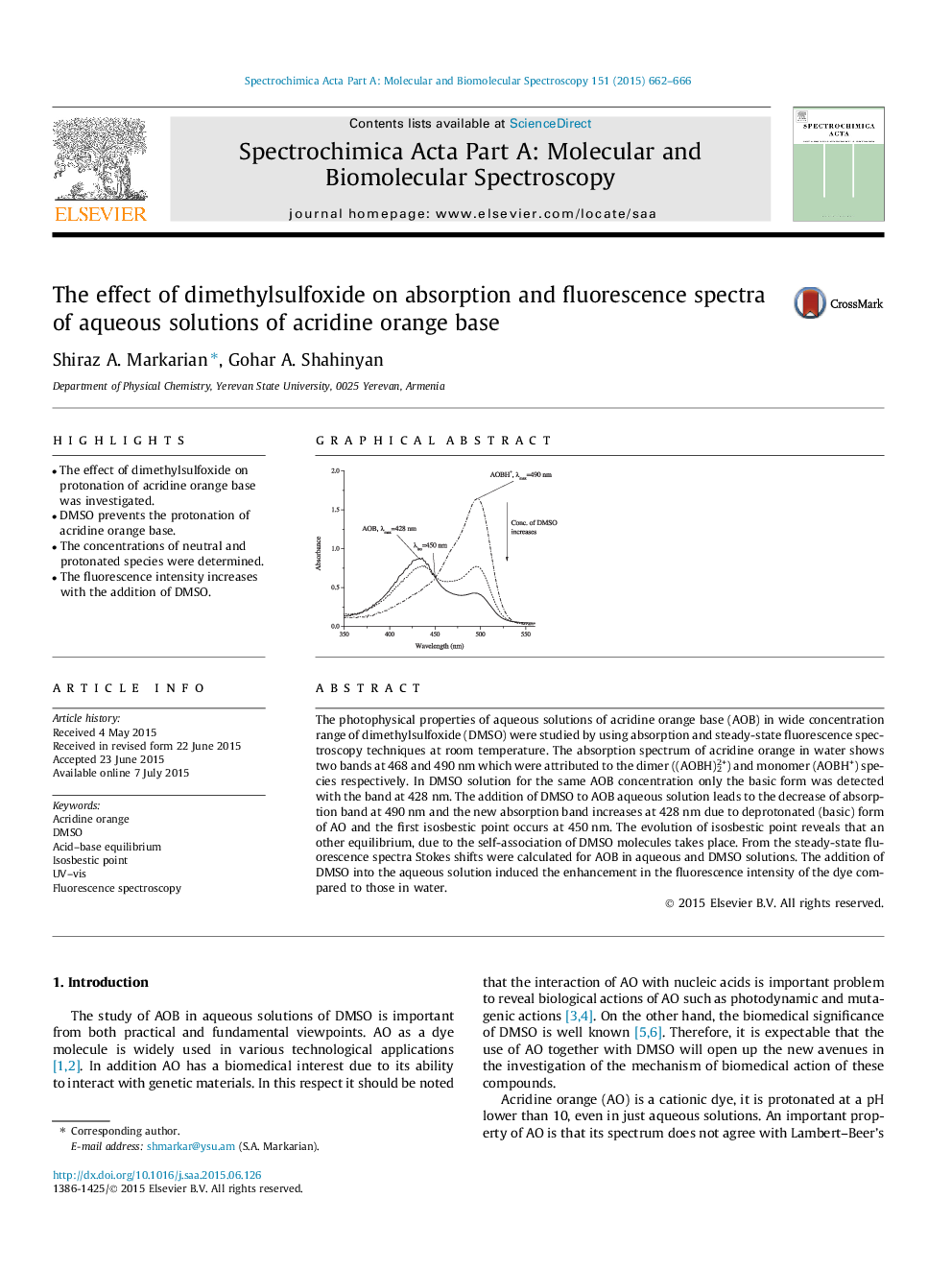| Article ID | Journal | Published Year | Pages | File Type |
|---|---|---|---|---|
| 1230126 | Spectrochimica Acta Part A: Molecular and Biomolecular Spectroscopy | 2015 | 5 Pages |
•The effect of dimethylsulfoxide on protonation of acridine orange base was investigated.•DMSO prevents the protonation of acridine orange base.•The concentrations of neutral and protonated species were determined.•The fluorescence intensity increases with the addition of DMSO.
The photophysical properties of aqueous solutions of acridine orange base (AOB) in wide concentration range of dimethylsulfoxide (DMSO) were studied by using absorption and steady-state fluorescence spectroscopy techniques at room temperature. The absorption spectrum of acridine orange in water shows two bands at 468 and 490 nm which were attributed to the dimer ((AOBH)22+) and monomer (AOBH+) species respectively. In DMSO solution for the same AOB concentration only the basic form was detected with the band at 428 nm. The addition of DMSO to AOB aqueous solution leads to the decrease of absorption band at 490 nm and the new absorption band increases at 428 nm due to deprotonated (basic) form of AO and the first isosbestic point occurs at 450 nm. The evolution of isosbestic point reveals that an other equilibrium, due to the self-association of DMSO molecules takes place. From the steady-state fluorescence spectra Stokes shifts were calculated for AOB in aqueous and DMSO solutions. The addition of DMSO into the aqueous solution induced the enhancement in the fluorescence intensity of the dye compared to those in water.
Graphical abstractFigure optionsDownload full-size imageDownload as PowerPoint slide
